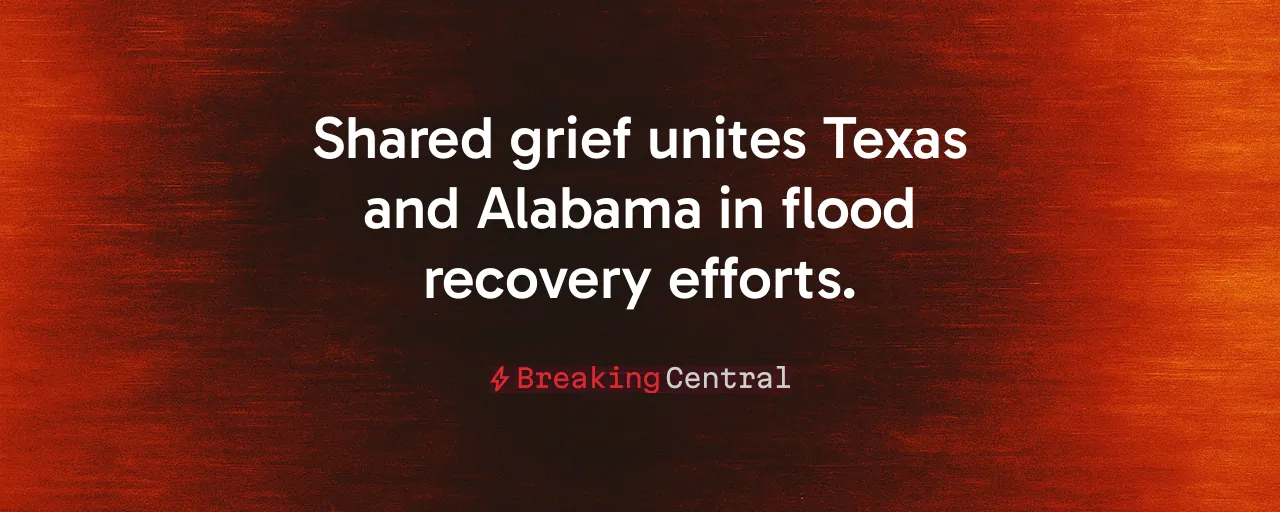A Shared Grief Sparks Solidarity
The devastating flash floods that tore through Texas Hill Country over the July 4 weekend of 2025 left communities reeling. With 82 lives lost and many still missing, the tragedy hit hard across state lines. Texas Governor Greg Abbott proclaimed Sunday, July 6 as an official Day of Prayer, with Alabama Governor Kay Ivey joining him in honoring victims including eight-year-old Sarah Marsh from Mountain Brook, Alabama. Her death forged a bond of shared sorrow across state lines.
This call for prayer is deeply significant. It reflects a belief that faith can unite people in times of crisis, offering comfort to families and strength to first responders. Ivey's proclamation, echoed by Texas Governor Greg Abbott, underscores a commitment to community and moral support, even as practical challenges loom large. The floods, triggered by up to 16 inches of rain in hours, demand both spiritual and tangible responses.
The disaster also raises urgent questions. How can communities prepare for such unpredictable events? What role does faith play in public responses? The answers involve balancing heartfelt compassion with hard-nosed pragmatism, prioritizing local leadership and time-tested values.
The Power of Prayer in Crisis
Prayer has long served as a unifying force during national tragedies, from hurricanes to pandemics. Governors like Ivey and Abbott draw on this tradition, invoking faith to rally citizens and provide solace. For the families of the 82 confirmed victims, including young Sarah Marsh, these proclamations offer a sense of shared purpose. Faith communities across Texas and Alabama have responded, organizing vigils and collecting donations to support survivors.
Critics may argue that official calls for prayer risk alienating some citizens. These proclamations are voluntary, rooted in America's religious heritage, and carefully crafted to invite participation. They also support the tireless work of first responders who rescued over 850 people before federal teams arrived. This balance of spiritual and practical action reflects the strength of local communities, which often outpace bureaucratic responses.
Local Heroes Outshine Federal Delays
The Hill Country floods exposed the limits of centralized disaster response. Local emergency managers and volunteers led the charge, saving lives as federal agencies scrambled to mobilize. The Guadalupe River's 26-foot surge in 45 minutes caught many off guard, but Kerr County's first responders acted swiftly. Their success highlights a key principle: states and communities are best positioned to handle crises when empowered with resources and autonomy.
Outdated federal systems, like NOAA's aging radar network, compounded the chaos. Residents received little warning as the river roared through camps and homes. This issue has persisted. The Guadalupe's history of deadly floods, from 1998 to 2015, points to geography as the primary driver, alongside weather patterns. While some push climate-focused narratives, the immediate need is clear: modernize local warning systems and empower regional responders.
Building Stronger, Smarter Communities
Preventing future tragedies requires investment in infrastructure. Dams, levees, and advanced river gauges can mitigate the Hill Country's unique risks, where steep hills and thin soils amplify runoff. Texas and Alabama have a chance to lead, pushing for bipartisan upgrades that prioritize safety over politics. Mandatory evacuation plans for youth camps, like Camp Mystic, could save lives, especially for vulnerable children.
Faith-based relief networks also play a vital role. These groups, often quicker than government aid, deliver food, shelter, and hope. Expanding their reach through volunteer training and state partnerships can amplify their impact. This approach respects local priorities and addresses urgent needs. The $4 billion in damages underscores the stakes: rebuilding efforts need to be strategic and proactive.
Guarding Against Politicized Narratives
Some voices frame the floods as proof of climate change, citing increased rainfall intensity. While studies note a 7-15% rise in extreme precipitation per degree of warming, the Hill Country's flood risks predate modern trends. Its topography fuels these disasters, alongside weather patterns. Jumping to sweeping climate policies risks politicizing victims' grief and diverting focus from practical fixes like better sirens or flood-proof infrastructure.
Governors' freedom to call for prayer also faces scrutiny. Secular groups may challenge these proclamations, but such efforts could erode the right to free religious expression. Public faith, when inclusive and non-coercive, strengthens community bonds and supports science-based solutions. The real danger is letting ideological debates drown out actionable steps.
A Unified Path to Recovery
The Hill Country floods demand a response that blends compassion with competence. Prayer offers comfort, uniting Texans and Alabamians in shared resolve. This needs to pair with action: stronger levees, faster alerts, and empowered local responders. By investing in infrastructure and faith-based networks, states can rebuild communities that are resilient and rooted in shared values.
Alabama's mourning for Sarah Marsh and Texas's fight to recover reflect a deeper truth. Communities thrive when they lean on one another, guided by faith and driven by practical solutions. The road ahead is long, but with clear priorities, the Hill Country can rise stronger.
This tragedy calls for action. Let's honor the lost by building a future where families are safe, communities are prepared, and hope endures. Texas and Alabama stand together, ready to lead the way.
